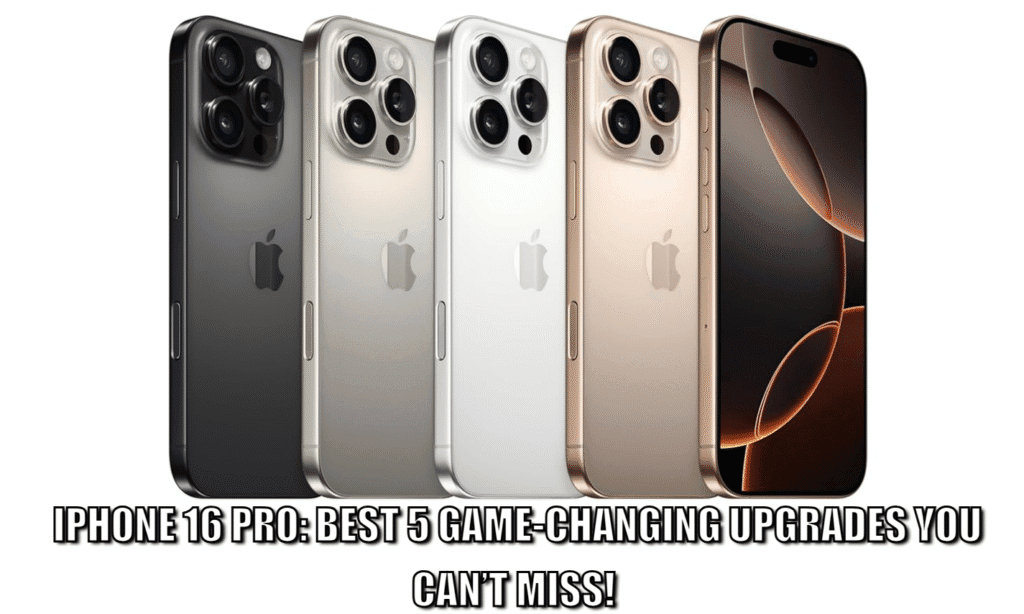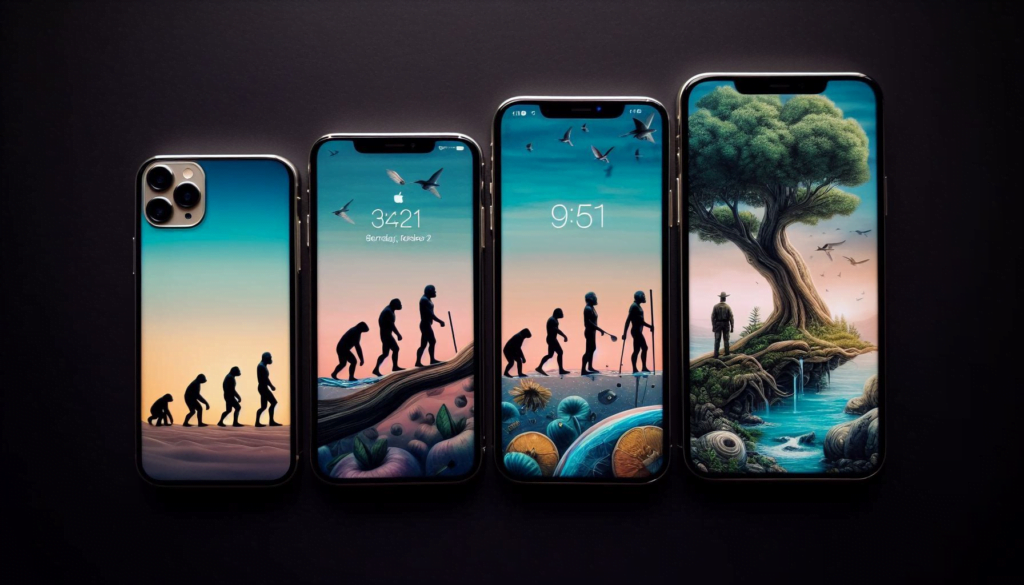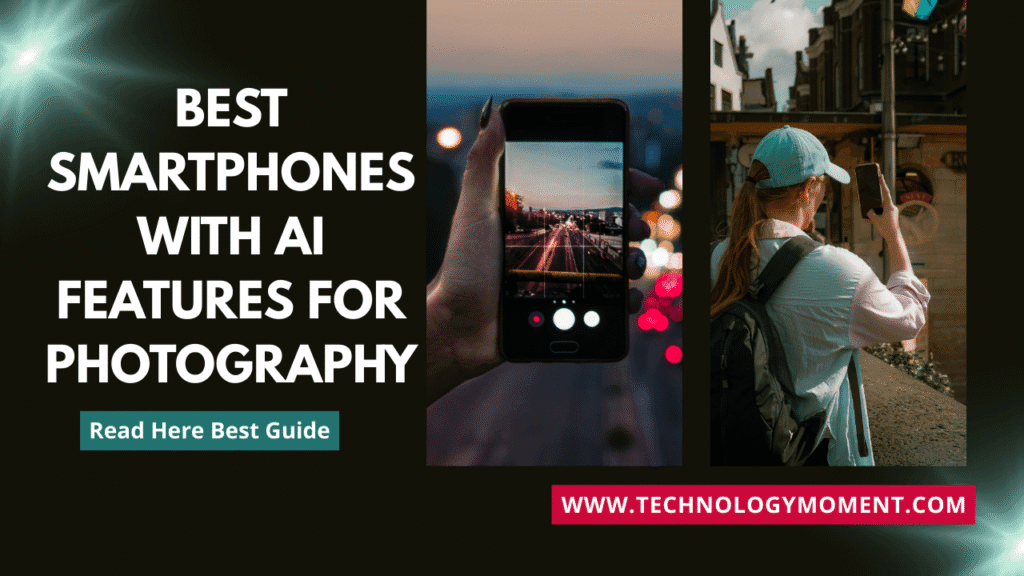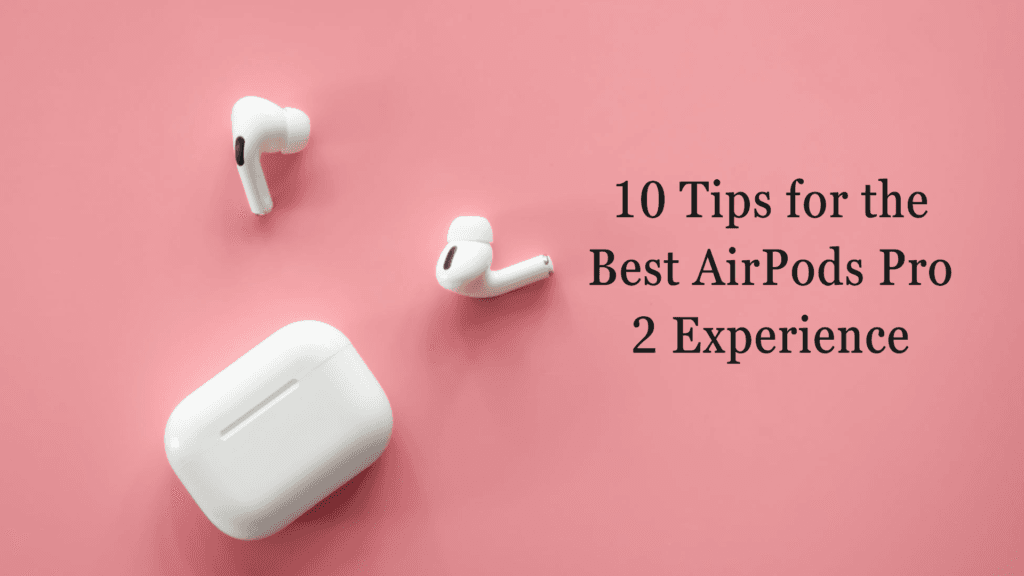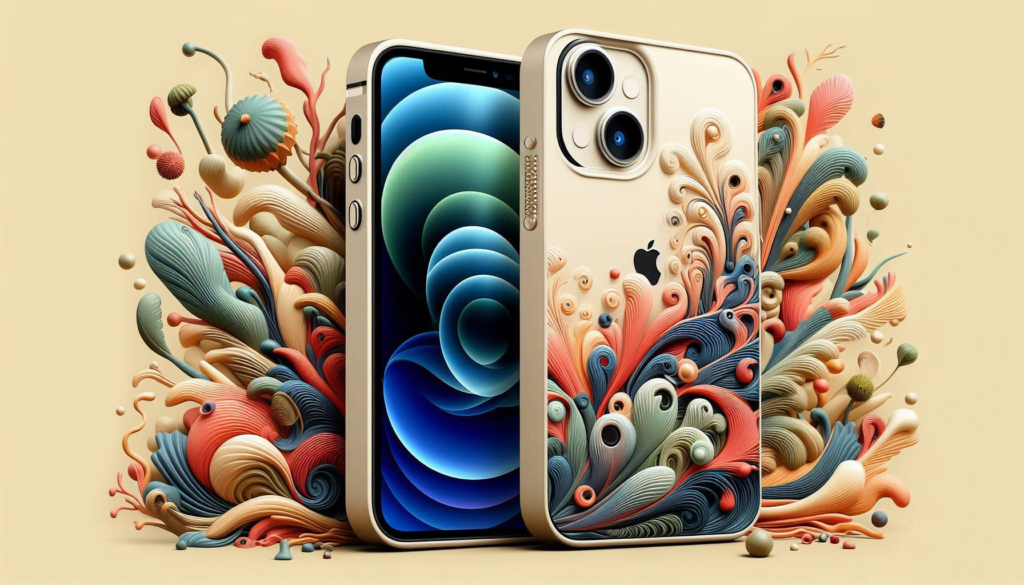
Welcome to Technology Moment — Where Smart Living Meets Smart Devices. You’re biking through the vibrant streets of Amsterdam, music streaming directly into your ears, no earbuds in sight. A call comes in from a friend in Tokyo—you answer it with just a tap on your temple. Later, while hiking in the Rockies, you check the time, control your playlist, and ask for the weather, all without ever reaching into your pocket. Sounds like science fiction? It’s not. This is the real-world experience of Oakley Smart Glasses users across the globe.
Here at Technology Moment, we’re not just about product reviews or tech specs — we’re about helping you live smarter every single day. In our fast-paced, hyper-connected world, smart wearables like Oakley Smart Glasses are no longer just “cool gadgets.” They’re essential tools for everyday life, offering seamless integration between fashion, function, and freedom.
“Get the Most From Your Oakley Smart Glasses Today” isn’t just another how-to article. It’s a practical guide born from real user experiences — from busy commuters in London to digital nomads in Vietnam, from mountain bikers in Colorado to creatives walking the neon-lit streets of Seoul. These stories echo a simple truth: Oakley Smart Glasses are changing how we live, work, and connect.
So whether you’re wearing them for hands-free calls while stuck in LA traffic or tuning into your focus playlist during a Tokyo train ride — this guide is your ultimate companion. We’ll dive deep into everything from setup to voice assistants, music controls to battery-saving hacks — all written in human language, not robot code.
By the end of this post, you’ll stop treating your Oakley Smart Glasses like just another pair of sunglasses and start using them as the high-performance smart wearable they were meant to be.
Table of Contents
Smart glasses used to be the stuff of sci-fi films, but Oakley has brought that dream into reality—and wrapped it in some of the most stylish, sporty frames you’ve ever seen. Oakley Smart Glasses aren’t just about looking good (though they do that well); they’re about living smarter.
Clara, a photojournalist in São Paulo, Brazil, is always on the move—capturing stories in motion. While biking to her next shoot, she uses her Oakley Smart Glasses to take calls and play voice notes without ever touching her phone. Meanwhile, James, a tech-savvy consultant in Toronto, uses his pair during client calls while walking his dog in the park—effortlessly blending business with downtime.
Oakley’s smart eyewear isn’t for geeks in labs anymore. It’s for everyday people—cyclists, runners, students, commuters, and even remote workers—who want a better, more seamless way to stay connected. Whether you’re out on a run in Sydney or waiting for the train in Berlin, these glasses bridge the gap between the real world and the digital one without ever pulling your phone out of your pocket.
Key Features of Oakley Smart Glasses
What makes Oakley Smart Glasses stand out isn’t just the tech—it’s how naturally it fits into your life.
Take Miguel, a student in Madrid who listens to language podcasts during his morning walk. Thanks to open-ear speakers cleverly built into the arms of the glasses, he hears crystal-clear audio while still being fully aware of his surroundings. It’s safer, smarter, and surprisingly discreet.
The touch control system is intuitive—no more fumbling for buttons. A swipe or tap on the side lets you skip tracks, answer calls, or activate your voice assistant. A friend in Mumbai told us how she uses this feature to skip songs mid-jog, even when her hands are sweaty or full.
Voice assistant integration is another highlight. Whether you’re shouting “Hey Siri” in a New York coffee shop or saying “OK Google” in a rainy street in London, your glasses become a voice-powered command center. And let’s not forget the iconic Oakley frame designs, which means you’re not trading fashion for function—you’re combining both.
How to Set Up Your Oakley Smart Glasses
Setting up Oakley Smart Glasses is easy—but only if you do it right the first time. A tech YouTuber in Seoul once shared how he accidentally skipped a setup step and couldn’t get the audio to work properly for a whole day. Don’t make that mistake.
Start by unboxing them carefully. You’ll find the glasses, a charging cable, and a quick-start guide. Fully charge them before the first use—it helps optimize the battery’s long-term life.
Then, connect them to your phone using Bluetooth. Whether you’re on Android or iOS, download the Oakley companion app (often called “Oakley Radar Pace” depending on your model). This app lets you control settings like touch sensitivity, battery monitoring, and firmware updates.
A woman in Cape Town shared how she used the app to customize her voice assistant triggers and set her preferred tap commands. Within minutes, she turned her Oakleys into her dashboard.
Remember: don’t rush the process. A proper setup means you’ll avoid random disconnections and make the most of all available features.
Tips to Maximize Daily Use
Think of your Oakley Smart Glasses as a mini command center that sits comfortably on your nose. Then don’t treat them like “just another accessory.”
Let’s take Adam, a college student in Melbourne. He uses his Oakleys to take morning Zoom lectures while walking his dog—hands-free and stress-free. He doesn’t miss a word, thanks to the glasses’ directional audio.
Here’s another story: A corporate trainer in Nairobi uses her glasses to listen to audiobooks during her morning runs, all while staying aware of traffic around her. The open-ear audio is a game-changer—it keeps her connected without isolating her from the world.
To truly get value from your smart glasses:
- Use them during tasks where holding your phone is annoying (gym, walking, driving).
- Sync them with Spotify, Apple Music, or Audible for seamless listening.
- Use the voice assistant when your hands are full or dirty (think cooking, cleaning, or driving).
It’s not about adding more tech to your life; it’s about removing friction from the way you already live.
Battery and Charging Hacks
Let’s talk power. You don’t want your Oakleys dying on you right before an important call or halfway through your city walk.
In Tokyo, one user said he was frustrated by how fast the battery drained—until he realized he was accidentally leaving the audio on in standby mode. Pro tip? Use the app to power down when idle, or at least enable sleep mode when not in use.
Always use the provided cable, and avoid third-party chargers—they can degrade the battery over time. If you’re traveling (like a digital nomad in Bali we spoke to), carry a portable USB battery pack with you. It’s lightweight and can give your glasses a quick top-up.
And here’s something few people talk about: keep your firmware updated. Battery performance is often improved with each software update. A cyclist in Zurich shared how a firmware patch extended his usage time by nearly 90 minutes.
Don’t just charge because it’s empty. Charge smart. Avoid going from 0 to 100% too frequently—try to keep your battery between 20% and 80% for long-term health.
How to Use Voice Assistants with Oakley Glasses
Using voice assistants with Oakley Smart Glasses isn’t just about tech convenience—it’s about real freedom. Imagine you’re out for an early morning run in Central Park, your hands are tied up with your water bottle and gym gear, but you need to send a quick message or set a reminder. Just say, “Hey Siri,” or “Okay Google,” and your smart assistant is on it—without ever pulling out your phone.
For travelers in places like Berlin or Bangkok, this is especially useful. Let’s say you’re navigating a city street on a bike or scooter. You need directions, but stopping isn’t an option. With Oakley’s discreet built-in mic and audio, you can ask Google Maps for help on the go. The real power of voice integration lies in its subtlety. You’re not drawing attention. You’re not fiddling with screens. You’re just… moving forward.
Setting it up is pretty simple. Once paired with your smartphone via Bluetooth and the companion app, Oakley Smart Glasses sync with your phone’s native voice assistant. From there, it’s about learning to trust the tech. Start small—ask for the weather, play your favorite Spotify playlist, or dictate a quick shopping list. Soon, you’ll feel like you’re living in the future—just like smart eyewear users in San Francisco who use their glasses for calendar reminders, or students in Tokyo who whisper questions to Google during a campus walk.
The key is to speak naturally, just as you would on the phone. Voice assistants are getting smarter every day, and when paired with Oakley’s hands-free hardware, they unlock a whole new way to interact with your digital world.
Style Meets Tech: Wearing Oakley Smart Glasses Anywhere
There was a time when wearable tech meant bulky designs and geeky vibes. But Oakley flipped that stereotype on its head. These glasses aren’t just smart—they’re stylish, athletic, and adaptable. Whether you’re attending a startup pitch in London or sipping coffee at a street-side cafe in Milan, Oakley Smart Glasses blend in seamlessly while standing out just enough to spark curiosity.
Take Maria, a fashion-forward entrepreneur in São Paulo. She pairs her Oakleys with her everyday wardrobe—blazers, crop tops, even dresses—thanks to their sleek build and modern silhouettes. On the other side of the globe, Jake, a rock climber in New Zealand, wears them on every outdoor trip. The wrap-around sport design stays secure and durable, even through wind and sweat.
What makes Oakleys exceptional is this balance between tech and wearability. You don’t have to sacrifice your look for function. The frames come in multiple designs—think Holbrook and Sutro styles—with interchangeable lenses and even prescription options. Whether you’re heading to a client meeting or hiking through Iceland’s wild terrain, they match your vibe and keep you connected.
So go ahead—pair them with your activewear or business casual. They’re just as much fashion-forward eyewear as they are smart gear. And when you’re wearing them, you’re not just keeping up—you’re staying ahead.
Privacy and Safety Tips
Oakley Smart Glasses give you the power of audio and voice control—but with great power comes the need for smart usage.
Start with awareness. Even though these glasses don’t have built-in cameras like some competitors (which is a relief for many), they still have microphones. That means it’s essential to be conscious of when and where you’re speaking commands. Picture using your glasses in a quiet library in Singapore or during a confidential meeting in Dubai—probably not the best move, right?
In countries like Germany, where data privacy is a top priority, users are especially cautious. They keep voice assistant activation turned off unless needed and regularly review privacy settings in the app. It’s a smart practice.
Also, avoid connecting your Oakley Smart Glasses to multiple devices at once. If you’re switching between work and personal phones (a common issue in places like South Korea, where dual phone usage is popular), disconnect properly to avoid cross-data glitches.
Ultimately, treat your glasses as you would a smart speaker or phone. Adjust settings to limit data sharing, avoid saying sensitive info out loud, and always mute the mic when not in use—yes, that’s possible via the app or touch gestures.
When used responsibly, Oakleys offer freedom, not risk. It’s all about balance.
Common Troubleshooting Issues (And Quick Fixes!)
No piece of tech is perfect, and Oakley Smart Glasses are no exception. The good news? Most issues are minor and fixable in minutes.
Let’s start with connectivity—by far the most common gripe from users in New York to New Delhi. If your glasses suddenly stop syncing, don’t panic. Often it’s a Bluetooth clash—too many nearby devices or an outdated app. Restart your glasses, clear any old pairings on your phone, and re-sync through the My Smart Glasses app.
Another frequent hiccup is audio distortion. One user in Lagos reported muffled sound after a sudden downpour. Turns out, even though Oakleys are water-resistant, moisture in the mic or speakers can cause issues. Let them air dry completely, and the clarity often returns. If you work out with them often, wipe them down gently after each session to avoid sweat damage.
Battery life concerns? That’s common too. Try turning off unused features like auto-voice activation, and always use the original charger. In Tokyo, commuters discovered a clever trick: plugging the charger into a power bank while in a backpack allows them to top off the charge during train rides. Genius, right?
And finally, if your glasses are completely unresponsive, a hard reset (holding both touch sensors for 15 seconds) usually brings them back to life.
Software Updates and App Integration
Software is the heartbeat of your Oakley Smart Glasses. The hardware is sleek, sure—but without regular updates, you’re missing out on all the behind-the-scenes improvements that make your experience better, smoother, smarter.
Users in Toronto and Dubai often talk about how new firmware has improved everything from audio syncing to voice recognition accuracy. So make it a habit—once a month, open the app and check for updates. Most are small, quick installs, but they make a massive difference.
And here’s something exciting: Oakley’s software now integrates with major apps like Spotify, WhatsApp, and Google Calendar. If you’re listening to a playlist during a long train ride through Vietnam, a double-tap lets you skip the track. If you’re walking into a team meeting in Sydney, a discreet voice command lets you check your next calendar item.
For Android users, there’s deeper customization available—like controlling notification filters or assigning gestures for apps. iOS users get seamless Siri integration and music playback enhancements.
Oakley vs Other Smart Glasses
When it comes to smart glasses, the market is full of exciting options — from the Bose Frames to the Ray-Ban Meta collaboration. But Oakley Smart Glasses stand apart, and not just because they’re stylish or come from a legendary performance eyewear brand.
Let’s take a story from Leo, a fitness coach in Barcelona. He originally tried out Bose Frames because of their audio quality. “The sound was great,” he said, “but they didn’t fit tightly enough when I was running on the beach.” When he switched to Oakley’s smart models, everything changed. Designed with sports in mind, the grip and wraparound style stayed put even during intense training sessions. “I could jump rope, cycle, sprint — and they never slipped. Plus, the audio? Still crisp.”
While Bose and Ray-Ban offer great integration and style, Oakley goes further for active users. If you’re more about movement and sweat than selfies and cafes, Oakley Smart Glasses deliver where it counts — functionality without compromise.
Plus, Oakley’s use of Prizm™ lens tech gives you more than just smart features — it enhances your vision in real-time environments, making colors pop and details sharper. You don’t get that with most other smart eyewear brands. It’s tech that feels invisible until you take it off — and suddenly realize what you’re missing.
Accessories and Add-Ons
Smart glasses may be high-tech, but like any tech device, the right accessories can elevate your experience.
Take Priya in Mumbai, for example. She uses her Oakley Smart Glasses during long commutes and busy workdays. Her go-to add-ons? A magnetic charging case that fits right into her handbag, and a microfiber foldable pouch with a clip-on carabiner for her scooter rides. These small things made a big difference in keeping her glasses charged, safe, and accessible.
For users who need prescription lenses, Oakley also provides integration with RX lens inserts — meaning you don’t have to sacrifice vision for function. And for adventurers like Tomasz from Poland, a rugged hard-shell case kept his glasses protected during his alpine treks. “It survived snow, mud, even a fall from my backpack,” he laughs.
Bottom line: You don’t need dozens of gadgets. But a few well-chosen accessories will protect your glasses, enhance daily use, and let you stay connected without fuss — or fear of breaking them.
Maintenance and Cleaning Tips
Yes, they’re smart. Yes, they’re durable. But Oakley Smart Glasses aren’t indestructible. If you want your investment to last, you’ll need to treat them right.
Think of Emma, a photographer based in rainy Vancouver. Her first mistake? It left smudges and tiny scratches that were impossible to fix. “I learned the hard way,” she admits. Now she carries a lens cloth and uses a water-based spray cleaner once a week. Her glasses look like new, even a year later.
Make sure to avoid alcohol-based cleaners — they can degrade the protective coatings and damage the embedded tech. Never dunk them in water, even if you’re tempted after a sweaty jog.
Also, don’t leave them on the dashboard of a hot car, like Jason did in Arizona. The heat warped the arms slightly, and though the tech still worked, the fit was never the same. A small zippered case would’ve saved him a lot of trouble.
Maintenance isn’t about babying your tech — it’s about keeping it reliable. Clean lenses mean better clarity. Clean audio ports mean clearer sound. And careful storage means you can enjoy them every single day — not just the day you bought them.
Real User Experiences
Want to know the true value of Oakley Smart Glasses? Just listen to the people using them.
Take Amina, a student in Berlin. “I’d take walks while listening to recorded lectures, completely hands-free. It changed how I learned,” she says. The discreet audio allowed her to study without looking glued to her phone or laptop.
Or Mark, a delivery driver in New York. He uses voice controls and audio navigation through the Oakley glasses so he doesn’t have to constantly pull over to check his phone. “It helps me stay on schedule — and avoid accidents.”
Then there’s Mei in Taipei, who uses them as her “social anxiety buffer” — taking calls and controlling music without touching her phone in crowded public areas. “People don’t even realize I’m on a call,” she laughs. “It feels like magic.”
These aren’t just tech fans. These are everyday people using smart eyewear to get through life more efficiently, comfortably, and confidently.
Future of Smart Eyewear
The smart glasses space is just heating up — and Oakley’s already ahead of the curve.
Imagine this: You’re wearing glasses that translate foreign languages in real time. Or glasses that display your heart rate, track your sun exposure, or project your calendar events right into your peripheral vision. Sounds wild, right? But developers and designers are already working on it, and Oakley is rumored to be exploring integration with augmented reality (AR) features.
A recent tech expo in Seoul even hinted that future Oakley models may include bone conduction audio, deeper integration with wearables like the Apple Watch, and gesture-based input controls. The line between wearable tech and personal assistant is blurring, fast.
But even without those futuristic features, Oakley Smart Glasses are proving something huge right now: smart eyewear doesn’t have to look weird or feel clunky. It can be sleek, practical, and genuinely helpful in real-world, everyday moments.
🧠 Conclusion
As our world gets faster and more connected, we often find ourselves chasing simplicity—tools that help us do more, with less friction. That’s the magic of Oakley Smart Glasses. They aren’t just sunglasses with tech crammed inside; they’re thoughtfully designed extensions of your lifestyle.
In Singapore, a marketing executive uses hers during her morning walk, listening to podcasts and catching early meetings without missing a beat. In San Francisco, a dad jogs with his toddler in a stroller, managing playlists and calls hands-free. In rural Canada, a cyclist streams GPS directions through her glasses, avoiding dangerous distractions on open trails.
These aren’t futuristic dreams—they’re today’s stories. And they prove something vital: when you truly learn to use your Oakley Smart Glasses to their full potential, they stop being just an accessory and start becoming a personal assistant, entertainer, navigator, and even safety net.
So whether you’re commuting, working out, traveling, or just relaxing, these glasses can be your go-to smart tool—if you know how to unlock their full capabilities. This guide was built to help you do just that. Use it. Refer back to it. Try things. Push the tech. Let your Oakleys evolve with you.
In a world full of tech overload, Oakley keeps it simple, functional, and stylish. Now it’s your turn to own it.
❓FAQs
Even with all the tips and global stories we’ve shared, a few burning questions always seem to pop up—because let’s face it, every user has a different rhythm to their day.
Are Oakley Smart Glasses waterproof?
While Oakley Smart Glasses can handle a little sweat or drizzle—like that unexpected rain in London or a sweaty bike ride in Rio—they aren’t built for underwater adventures. So maybe don’t take that dive in the Bali surf while wearing them.
Can I use them with prescription lenses?
Absolutely. Many users in Germany and the U.S. have had success getting their smart glasses fitted with prescription lenses by certified opticians. Just make sure you get it done professionally, because the frame includes smart tech that can’t be messed with.
How do I fix Bluetooth connection drops?
Bluetooth can be temperamental, especially in busy digital zones like New York or Tokyo. Keep your firmware updated, close unused apps on your phone, and give the glasses a quick reset. That usually clears up the issue. If not, the Oakley app often walks you through troubleshooting.
How long does the battery last?
On average, expect about 5 hours of continuous playback—enough for most urban commutes or a casual hike in the Swiss Alps. To stretch it out, lower the volume, turn off unused features, and always use the official charging cable.
Are they worth the money?
If you’re just looking for shades, probably not. But if you’re someone who juggles music, calls, directions, and voice assistants in your daily routine—from Seoul to Sydney—Oakley Smart Glasses are worth every rupee, yen, euro, or dollar.



